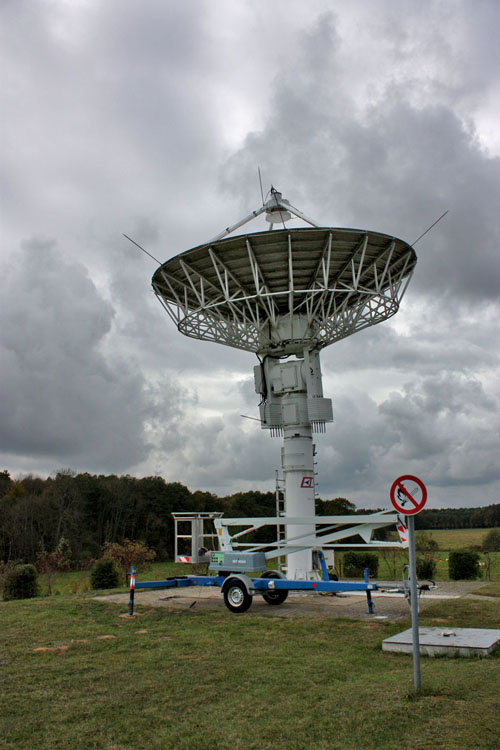|
German Space Agency, glance at Europe from the height of 800 km, rabbits in the city park, two weeks of lectures and more - it's all about the internship program of delegation from NTUU "KPI" TEMPUS CRIST in Berlin.
This story began in 1991 when Berlin Technical University launched its first satellite TUBSAT-A. It was developed by professors and students of the university. The University began to produce satellites on a commercial basis after the successful checking satellite platform. In 2008 appeared the idea to share experience in creating microsatellites with leading universities of the CIS countries, to open additional disciplines and create a network of ground communication stations, which would cover the whole of Eurasia. This project got name CRIST (Curricula Reform in Space Technology in Kazakhstan, Russia, Ukraine) and now, teachers of the Faculty of Aircraft and Space Systems of NTUU "KPI" went to Berlin for training.
Immediately arrests the attention the approach to teaching and development. The main thing is the result, and what tools is will be achieved by, doesn't matter. For example, laboratory work on orbit simulation can be performed even as seperate program, even in math package, even manually. The main goal - it must work.
We were impressed by the library in the Unievrsity. First, there may come anyone, no need to be a student or teacher - just put the bags and coats in the cloakroom. And then - several floors of book shelves. No librarians - only computers that tell which shelf and which book. And you can do without them - just walk between the shelves and find something interesting. Also, there are tables with computers and outlets for laptops.

A few words about Berlin iself. It's a heaven for cyclists, even according to European standards - paths, traffic lights, parking, bike is a common transport. Most students and teachers get to university on their two wheels. Hares, cranes, and even roe dee can be found in city parks, apart squirrels.
After two weeks of classes we have arranged a series of tours in aerospace companies. Everything started with a demonstration of live-video received from LAPAN-TUBSAT - satellite, developed by the Technical University of Berlin for Indonesia. Unfortunately, over the teritory of Europe were clouds, but much of Spain and the British Isles we managed to discern. After that, the company RapidEye, that sells satellite images, have shown us where and how all information is processed and stored. Recently, a new service - 3D-images of the earth surface that are created on information from several satellites. In fact, almost everywhere is a friendly attitude to photography, and a possible prohibition applies not to some technical secrets, but simply personal unwillingness to be on the photo.
In the German space agency DLR provided us with a tour in a data center, and young PhD-competitors talked about researches in the satellite industry. Working day of satellite "dishes" is settled by minutes because Center serves not only the German and European satellites, but also American, Canadian and Russian. KPI also was offered cooperation.
Visit to the DLR was the last point in our program, we already waited for Kyiv. Internship ended, now is the time to process what we were learned.
Post-graduate student of the Faculty of Aircraft and Space Systems, Dmitriy Mishkin
|

